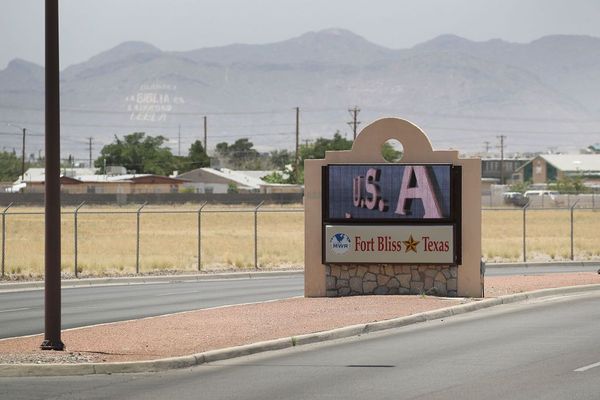“British holidaymakers will be able to use more e-gates in Europe, ending the dreaded queues at border control” – so says the government after the “post-Brexit reset deal” was agreed between the UK government and the European Union.
Ministers have been talking up the prospect of speeding up passport formalities for British travellers at EU airports.
Nick Thomas-Symonds, European Union Relations minister, says it will give British travellers “more time to spend on holiday or work trips… doing what you want, not being stuck in queues”.
But how will it work – and when might UK passport holders notice? Simon Calder, travel correspondent of The Independent, has had plenty of time to contemplate the subject while waiting in long queues at EU airports.
What are the rules for UK passport holders travelling to and from the EU?
After the 2016 vote to leave the European Union, the UK negotiated for British travellers to be “visa-exempt third-country nationals” – the same as dozens of other nationalities from Australia to Venezuela.
Despite some newspaper claims that “Brussels is forcing Brits to queue”, we actually demanded the right to wait in line for longer – surrendering the right to fast-track lanes.
While citizens of the EU and the wider Schengen area (including Iceland, Norway and Switzerland) speed through frontier formalities, British passport holders join the “other nations” queue.
What does this mean in practice?
If you fly into a European airport just after an Airbus A380 arrives from Dubai with more than 500 people on board, you’ll know that you’re going to be waiting for some time.
Queuing for an hour or more for British travellers are not unusual at busy airports such as Amsterdam Schiphol, Milan Malpensa and Paris Charles de Gaulle, while holders of EU passports or identity cards speed through.
UK travellers also face problems when travelling home, because of the need to be checked on the way out of the EU. Some airline passengers have missed flights because the exit queues for passport control are so slow.
Why do passport queues move so slowly?
For each UK arrival, EU frontier officials are required to check:
- The traveller has “sufficient means of subsistence” during the planned visit
- They will not breach the maximum stay limit of 90 days in Europe in the past 180 days
- They have “the means to return to the country of origin” (ie a ticket out of the EU)
In addition, the border guard must stamp the passport – which is also necessary on departure.
What’s different for EU citizens?
The Schengen Border Code of the European Union, which is the Bible of frontier rules, stipulates “separate lanes, indicated by uniform signs … in international airports” in order “to reduce the waiting times of persons enjoying the Union right of free movement”.
Those separate lanes move quickly because the only check made for EU citizens is that their travel document is valid and that it belongs to them. This verification can be made swiftly and efficiently by e-gates which match the traveller’s face with the biometric information on the travel document.
So how will the passport process for UK travellers be improved?
British travellers are not currently allowed in the EU fast track queue as arrangements stand, because of two obstacles:
- The legal requirement for British travellers to be checked to ensure they meet the conditions of entry to the EU
- Unhappiness among Europeans if the British, who voted to surrender the benefits of membership of the European Union, are allowed to swerve into their lane and slow things down
The solution is to accelerate processing using e-gates – which is already being done.
Two versions are currently being offered:
- Special “third-country national” e-gates, speeding up the face check for British and other nationalities. This happens in Rome.
- Allowing UK (and other favoured nations) passport holders to use the e-gates for EU citizens and British travellers are then flagged to see a border guard, as is the practice at Amsterdam Schiphol and Lisbon.
Using e-gates is a win for the host country as well as for British travellers, because it allows the authorities to process routine passengers more swiftly.
Facial recognition is now so sophisticated that matching the traveller against their passport is a task that e-gates can do easily and quickly, leaving officers to concentrate on “persons of interest”.
What exactly have UK ministers negotiated?
The exact wording is that “British holidaymakers will be able to use more e-gates in Europe” (my italics).
The roll-out of e-gates to UK travellers is happening anyway, because it helps the authorities process travellers more efficiently, but that process could accelerate with new impetus from Brussels.
But “more e-gates being agreed” and “rejoining the fast track passport queues” are by no means the same thing.
Where did the idea that we would actually be able to join those fast-track lane come from?
This is all to do with the EU’s much-delayed entry-exit system – which is now due to begin being rolled out in October.
The plan involves every Schengen area external border being connected with a central database, with comings and goings registered digitally rather than through stamps in passports. The aim is to keep tabs on arriving and departing travellers and detect over-stayers more easily.
Initially it will be something of a nightmare. The EES will require third-country nationals such as British visitors to provide facial biometrics and fingerprints. The time taken to process a planeful of UK passengers arriving at Palma could quadruple – and even longer at Dover and Folkestone for motorists heading across to France.
On that subject: ministers and transport companies hope EU officials will accept that the latest facial recognition technology is so accurate that fingerprinting isn’t necessary – which would accelerate the whole process.
In time, when the system is fully up and running, it is feasible that British passport holders will be allowed to go through an e-gate with no further check – because the database will know about previous comings and goings.
When the Etias “euro-visa” comes online (no less than six months after the entry-exit system is running flawlessly) the digital infrastructure will also be able to verify if the traveller has a valid permit.
Any change on the ‘90-day rule’?
No. That limit remains firmly in place, and will be made easier to enforce with the entry-exit system.
I have an Irish passport. What does this mean for me?
Nothing changes: you are still able to use the fast track, and the EU border officer is allowed only to check that your passport is valid and that it belongs to you.
For more travel news and advice, listen to Simon Calder’s podcast
The new cross-Channel service with eco-conscious tourists in mind
First look at Royal Caribbean’s new $600 million Perfect Day getaway in Mexico
Secrets of Notre Dame restoration among experiences money can buy
Spain makes huge holiday ruling as 65,000 tourist rentals blocked
Pork pies, a goldfish, and a chainsaw: The weirdest items seized at airport security
UK’s longest direct rail route cancelled after more than 100 years







